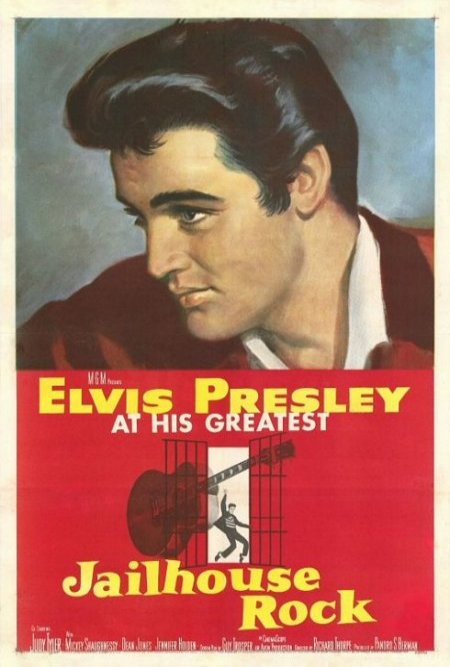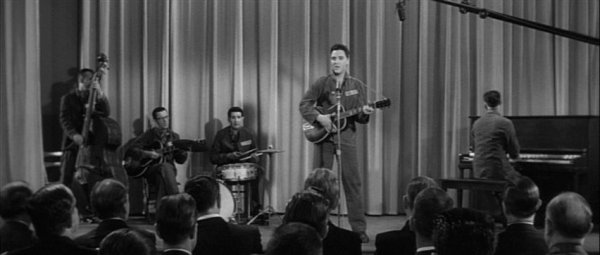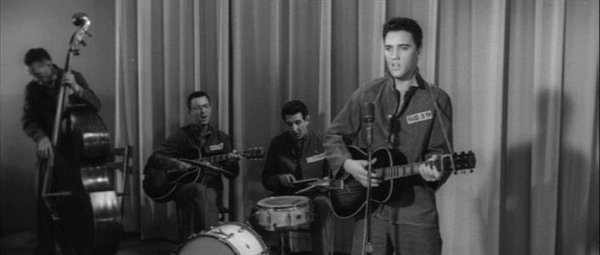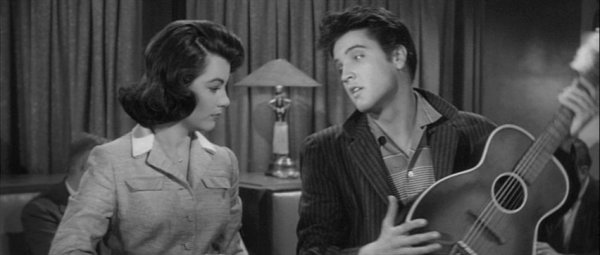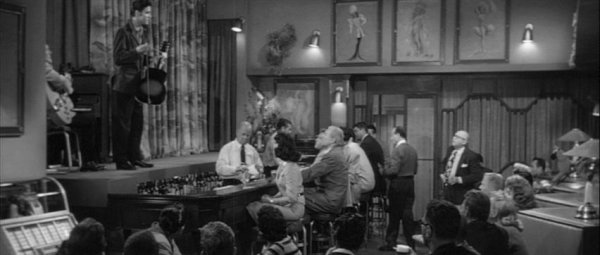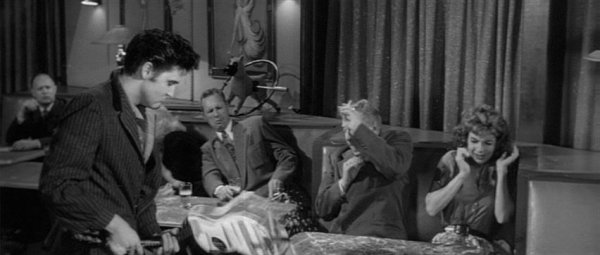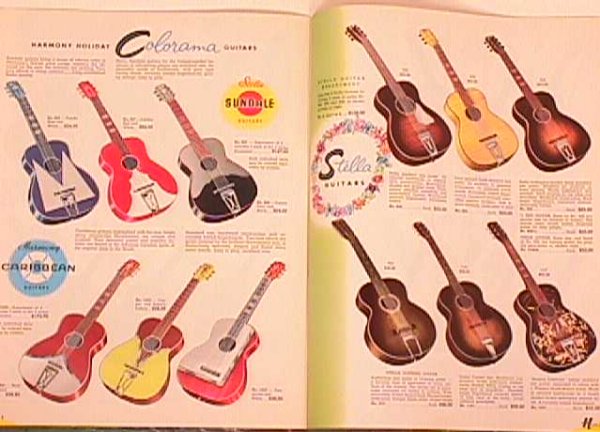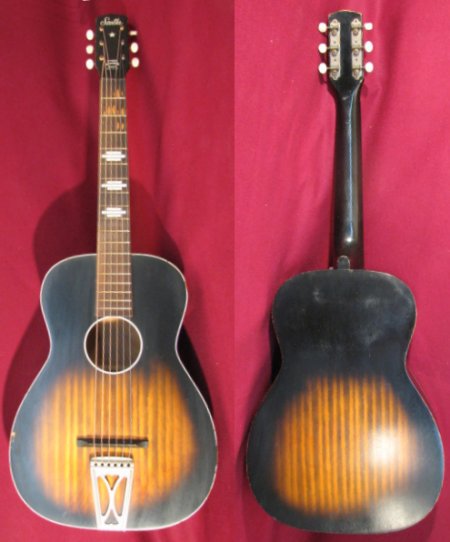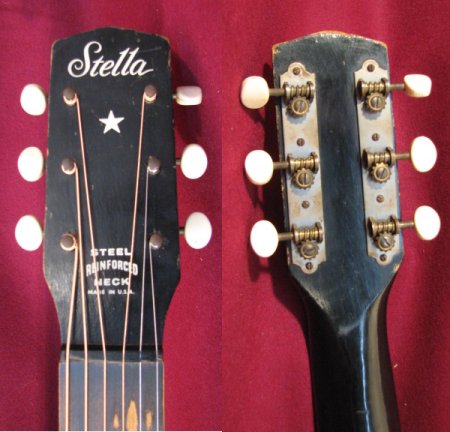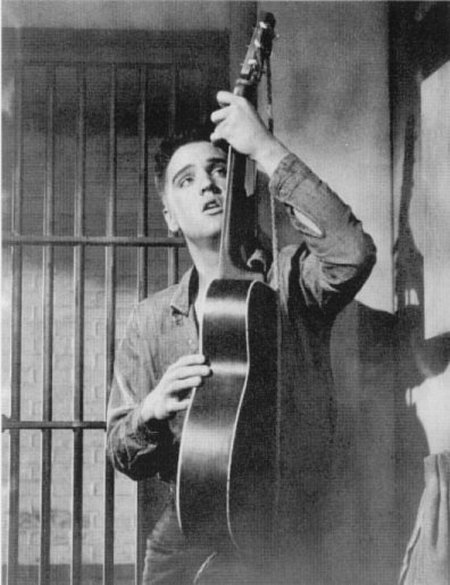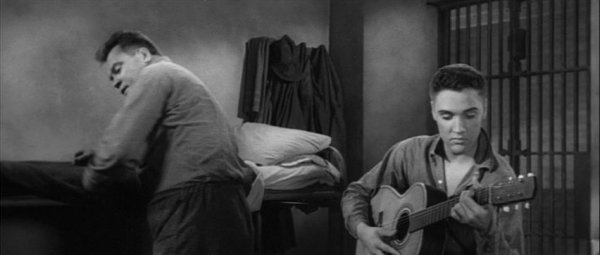 |
In the 1957 release of MGM's
In the movie Elvis is seen playing three (or four) different model guitars, the
first of which is one used by his Jailhouse Rock costar/cellmate, Mickey
Shaughnessey, who when Elvis plays it advises him not to "break any
strings." When Elvis' character makes his
After Elvis' character is released from Jail the story has him get another
guitar from a pawn shop to try
The guitar used in the bar scene, as evidenced by the improper position
of the bridge, was obviously not set up to actually play. To move
the plot along, Elvis' character reveals his temperament by smashing the
Stella guitar in response to the interruptions of his performance by a
non-interested crowd. The last guitar used by Elvis in the film
is an Australian made Maton (Hillbilly
Guitar) HG100S.
The Harmony Company in Chicago was founded by Wilhelm Schultz in 1892, initially in a two room loft on the top floor of the Edison Building at Washington and Market Streets, later the site of Chicago's Civic Opera House. In 1904 the business settled in their own
three story 30,000 square foot factory at 1738-1754 Lawndale Ave. By 1923 they stated annual sales of 250,000 units. By 1930 the amount of instruments being produced by Harmony made up the largest percentage of stringed instruments being manufactured in the U.S. at that time: guitars -
archtops, flat-tops, electric Spanish, Hawaiian bodies,
ukuleles, banjos, mandolins, violins and more. In 1941 the company moved to 3633 Racine Ave.
Harmony instruments carried many brand names. Valencia, Johnny Marvin, Vogue, Airline, Fender, Kay and Regal are a few of the more notable names which Harmony produced several models of guitars, but Silvertone
offered by Sears is probably the most common. Many of these guitars went overseas with the troops during WW2 and Korea as they were both inexpensive and extremely tough. Harmony stressed value while at the same time providing a player with a dependable, enjoyable instrument.
Prior to 1939 "Stella" guitars were manufactured in Jersey City by the Oscar Schmidt Company.
Sometime after that company folded the "Stella"
brand name was acquired by the Harmony Company.
The
Stella H929 models, as used in the movie, were made from 1945 to
1970, at least. It was a fairly inexpensive parlor sized guitar targeted as a
student model and/or for home playing. They were of hardwood
construction, solid birch top and body, with hard maple fingerboards stained rosewood, accurately
fretted and painted fret markers. It was offered with a sunburst
vertical faux flame finish, with white striping
on the top edge and soundhole. They had a floating bridge and metal tailpiece.
They were 13.25" wide, 35.75"
long, had a body depth of 3.75" and a scale length of 24.25". They listed for $16.50 in 1951,
$23.00 in 1957, $28.50 in 1967 and $31.50 in 1969. It was a very popular
model and also sold as an Airline 7076,
Airline
8286/7026, Alden 9935,
Barclay H929,
Fender F-1000,
Holiday AL9238,
Regal R200,
Silvertone 605
and SR
(Sears & Roebuck) 1294. This
page added August 15, 2010 is part of the section The
Movie Guitars of Elvis Presley.
Much of the specifications for Stella
models was obtained directly from the
Harmony guitars
database and the history of Harmony guitars from several sources on the web, primarily
Bill Hillman's site on Harmony guitars,
the
Harmony USA website.
The unidentified guitar of Jailhouse Rock
Elvis'
character, Vince Everett, in Jailhouse Rock in sentenced for 1-10 years
in prison where he is inspired by his cell mate, a former country and
western performer with some small success played by Mickey
Shaughnessey, to pursue a singing career and attempts to teach him something
about playing guitar.
Elvis' response literally paraphrases his father's in real life
when he says "I never
heard of anyone paying money to hear a guitar player." The
guitar is, as
of yet, an unidentified brand of flat top acoustic but has
a Harmony/Stella style headstock. The guitar appears to be a
traditional folk style rounded flattop, not too dissimilar from a Harmony
162 (and countless other brands) with a mahogany back and sides but
with an ornately decorated soundhole.
The
guitar also lacks fret markers and has a headstock identical to the Harmony
Stella used next in the movie and possibly other Harmony models.
page added August 15, 2010 |
|
All photos on this site (that we didn't borrow) unless otherwise indicated are the property of either Scotty Moore or James V. Roy and unauthorized use or reproduction is prohibited. |
